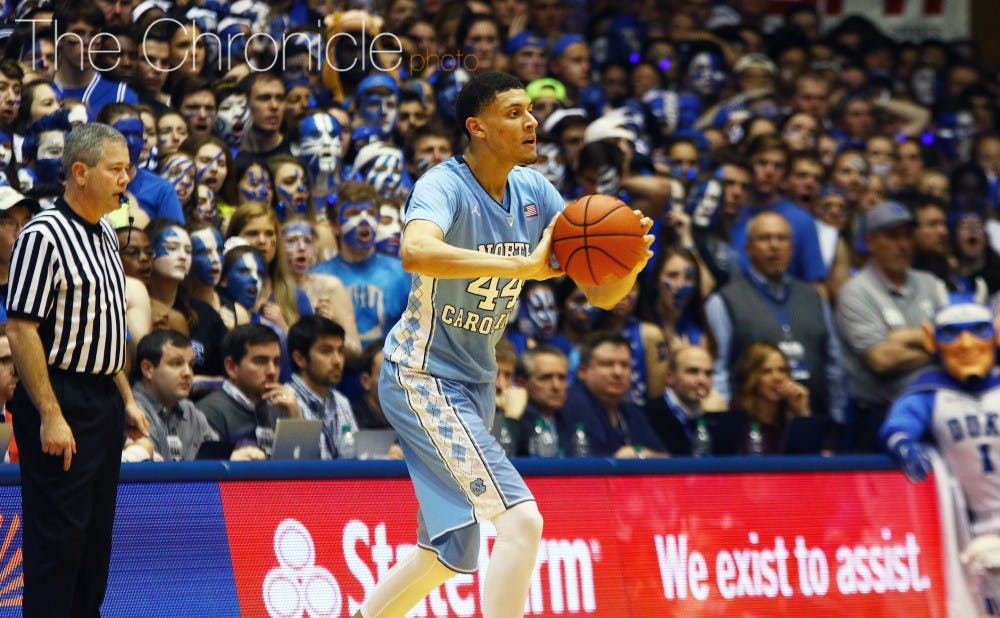On March 23, Blue Devil fans received news that in most years would leave them with wide grins on their faces.
Kentucky head coach John Calipari announced that every draft-eligible player on his team would enter the NBA draft—yes, all 12 Wildcats ranging from sure-fire lottery pick Jamal Murray to walk-on Dillon Pulliam.
But rest assured, Kentucky will have enough players to take the floor next season and many will be part of the group that decided to “leave” school months earlier due to new pre-draft rules adopted by the NCAA in January 2015.
With the rule changes, players are provided greater flexibility because they are allowed to wait 10 days after the combine—held this year from May 10 to May 15—to withdraw from the draft pool and return to college as long as they don’t hire an agent. Previously, any underclassman that declared for the draft permanently lost collegiate eligibility, creating a final list of players definitely leaving school by the end of April.
Now the NBA hopefuls have the ability to gauge their standing on draft boards by hiring draft advisors, and can even make the NBA pay for costs associated with attending the draft combine. If things don’t shape up the way they want them to, early entrants can decide to withdraw their names from the draft and head back to the college ranks with a scholarship waiting.
The winners from the new policy—easily, the players.
With the updated rules in place, there was a spike in early entrants from 48 in 2015 to 116 this year, including many athletes who wouldn’t normally have considered the idea of leaving based on their performance last season. But the opportunity to display their talents in front of scouts and in 5-on-5 scrimmages gives players another chance to get an NBA team to take the bait on potential and disregard the stat sheet altogether—a luxury often afforded only to international prospects in the past.
The NCAA’s primary goal of promoting “informed decisions” is also attainable with the new regulations.
The chance to work out at the draft combine and meet with teams gives players a realistic snapshot of where they stand compared to their counterparts, instead of a fantasy driven by ceiling and floor projections or online mock drafts. Better yet, the advice could be just what is needed for players to make drastic improvements in college should they forgo the draft.
Take for example Wisconsin forward Nigel Hayes or North Carolina’s Justin Jackson—both of who would have likely heard their names called at some point in the draft but elected to return to school with 55 other players. Without having to worry about being drafted, the two players had the chance to determine whether the ballpark range in which they would have been selected was desirable.
With only first-round contracts guaranteed by the NBA, extra time with teams and advisors during the pre-draft process can convince players like Hayes and Jackson to boost their stocks with another year in college.
But the residual impact from the new transfer rules may, in fact, come back to haunt well, the players.
The new pre-draft process places the biggest burden on college coaches, who are forced to toe the line between making assumptions about a player’s intentions and looking out for the future of their program.
To mitigate risk, coaches will almost immediately expand their recruiting efforts to compensate for the potential loss of a key cog for the following season. Secure the perfect backup and you can rest easy at night knowing you have a plan should a player decide to head to the draft. But wait even a bit too long and you could be left with slim pickings from remaining recruits to fill what could be a massive void.
And then there’s the nightmare scenario that will likely keep coaches up at night for years to come.
If a coach decides to jump the gun and recruit a potential replacement, he leaves open the possibility of a logjam at the position should his early-entrant decide to return to school—a situation that leaves no one happy. Recruiting promises may be broken and battles for playing time may ensue, creating a discord that could alter team chemistry before the games even begin.
But at the end of the day, the new rules remain a better deal for the players.
Although five-star center Marques Bolden played an extended waiting game with his recruitment to hear the statuses of Kentucky’s big men, the draft process did not seem to impact Bolden’s final decision as he opted for a Duke program that may offer him less playing time and fewer touches as a freshman.
The rule also stands to benefit the college game, with players having more time to weigh the merits of coming back for a chance to contend for a championship.
After finishing 16-17 overall and 5-13 in the ACC a year ago, conventional wisdom would say that N.C. State’s frontcourt duo of BeeJay Anya and Abdul Malik-Abu should have converted their play on a subpar team into a spot in the draft.
But with the lure of joining forces with one of the nation’s top freshman point guards in Dennis Smith Jr., Abu and Anya rolled the dice, electing to return to school while still having the flexibility to enter the draft a year from now.
The day may be coming when, as was the case with last year’s Kentucky team, Duke’s entire roster will decide to enter the draft. If that day comes, it will not be time to panic, but simply a period to anxiously wait and see how the never-ending balancing act of the offseason plays out.
Get The Chronicle straight to your inbox
Signup for our weekly newsletter. Cancel at any time.

